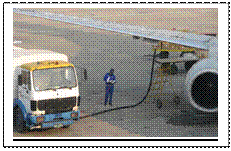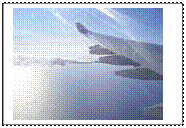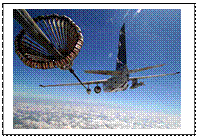
Заглавная страница Избранные статьи Случайная статья Познавательные статьи Новые добавления Обратная связь FAQ Написать работу КАТЕГОРИИ: ТОП 10 на сайте Приготовление дезинфицирующих растворов различной концентрацииТехника нижней прямой подачи мяча. Франко-прусская война (причины и последствия) Организация работы процедурного кабинета Смысловое и механическое запоминание, их место и роль в усвоении знаний Коммуникативные барьеры и пути их преодоления Обработка изделий медицинского назначения многократного применения Образцы текста публицистического стиля Четыре типа изменения баланса Задачи с ответами для Всероссийской олимпиады по праву 
Мы поможем в написании ваших работ! ЗНАЕТЕ ЛИ ВЫ?
Влияние общества на человека
Приготовление дезинфицирующих растворов различной концентрации Практические работы по географии для 6 класса Организация работы процедурного кабинета Изменения в неживой природе осенью Уборка процедурного кабинета Сольфеджио. Все правила по сольфеджио Балочные системы. Определение реакций опор и моментов защемления |
III. Find the synonyms to the words.Содержание книги
Поиск на нашем сайте - fuel pipe - short of fuel - fuel dumping - to transfer fuel - to activate - to impair - defect - to fuel aircraft - to stop
IV. Answer the following questions. The answers should contain the underlined words. 1. What is the fuel capacity of your aircraft? 2. What can fuel starvation be caused by? 3. What can contaminate the fuel? 4. Which areas are considered restricted for fuel jettisoning? 5. What may be the reasons of excessive fuel consumption? 6. Can you name the causes when pilots performed successful ditching? 7. What does possible distance that the aircraft can glide depend on? 8. What can deteriorate fuel flow? 9. What may be the reasons of fuel imbalance? 10. Have you ever faced with running out of fuel? 11. What can cause engines cease operating? 12. Why is weather of paramount importance for flight?
V. Complete the sentences. 1. Fuel imbalance can lead to……… ……..………. 2. Fuel starvation can result in……………………... 3. Fuel exhaustion can cause……………….………. 4. Fuel leak can be caused by……………..………… 5. Fuel contamination can result from……..………..
VI. Discuss the following questions. 1. Why is fuel system of paramount importance? 2. What adverse weather conditions can result in fuel problems? 3. What technical deficiencies on the aircraft can lead to fuel flow problems? 4. What human mistakes can cause fuel system malfunction? 5. Enumerate possible fuel problems. 6. What is called fuel exhaustion? What are the results? 7. What is fuel starvation? What are the consequences? 8. What do we call fuel imbalance? What should be done in this case? 9. What types of fuel contamination do you know? Which ones are the most common? 10. Are fuel problems considered to be urgency or emergency situation? 11. What is fuel dumping? Are there any restrictions? 12. What is in-flight refueling? Are there any dangers? Is it used in Ukraine? 13. What procedures should the pilots perform in case of fuel problems? 14. What are the actions of ATC? VII. Read and discuss the text. FUEL PROBLEMS
Fuel problems may be caused by variety of factors: · Adverse weather conditions √ unexpected severe headwind (it reduces the speed and increases fuel consumption; so, the fuel remaining may became critical and not enough for reaching the destination) √ encountering thunderstorm activity zones (so, circumnavigation of the areas with CB clouds and diversion to an alternate aerodrome may result in fuel shortage) · Technical problems presuppose different system malfunctions √ deficiencies in pipe and pump systems (which can result in fuel leakage) √ fuel gauge/ fuel measurement system failure √ fuel consumption system failure √ fuel contamination with ice, water or metal chips and as a result blocking of fuel filters √ metal fatigue √low pressure in the system · Human factor contains √ wrong fuel calculation (due to various measuring systems which use different measuring units, e.g. in litters, pounds, gallons) √ fueling the aircraft with not appropriate quality of fuel √ poor maintenance service on the ground (when the technical stuff forgets to close the fuel filler and pilots fail to check it; when due to ground personnel foreign objects appear in the fuel) √ pilot’s error in feeding the engines with fuel during the flight √ pilot’s mistake (e.g. going around due to missed approach) √ ATC’s mistake (e.g. keeping the aircraft in holing pattern for considerable time, for example due to government flights etc.)
Effects: Fuel problems may have multiple side effects, possibly impairing the pilots ability to fly and land the plane safely. Without fuel one or both engines can be expected to fail, which may in turn result in a forced landing short of the RW or short of the airport itself. There are various fuel problems such as fuel leak, fuel starvation, fuel exhaustion, fuel contamination. In case of fuel leak pilots need to stop fuel supply from the affected tank in order to prevent ignition. Fuel exhaustion can result in engine failure as it can’t operate without fuel. If there is exhaustion only in one tank cross fuel procedure will take place (fuel from one tank will be transferred to another in order to eliminate fuel imbalance). Fuel exhaustion- is situation when the aircraft runs out of fuel completely and the tanks are empty that leads to engine failure. It is considered to be an emergency situation. In this case forced landing outside the aerodrome or ditching is possible. Radio Vectoring to the nearest aerodrome is recommended. Fuel starvation- is situation when there is fuel in the tank but there is a supply problem which either fully or partially prevents the fuel from reaching the engine. Causes may include a blocked fuel filter or more commonly water-contaminated fuel. In this situation pilot is not sure that remaining amount of fuel will be enough for safe completion of flight. He can switch off the fuel pumps on affected tank and supply both engines from another tank. Fuel imbalance – is the situation when the remaining of fuel in one fuel tank is bigger or smaller than in another. In this case pilots have to assess the situation (as the the engines may consume different amount of fuel due to age or some other parameters). So the crew checks the reason of imbalance. If there is no fuel leak – cross fuel procedure has to take place in order to equalize the fuel (the fuel from one tank is transferred to another). But if there is suspect of fuel leak, it is possible to supply both engines from one tank. Fuel contamination- is a situation when there is water, metal chips or some other foreign objects in the fuel. It can lead to engine failure, not stable work of the engine, fuel system failure, possibly forced landing out of aerodrome or ditching. The are different forms of contamination that can exist, for example- bacterial, microbial, foreign object, water, dirt, sand, ice In cases when maximum landing weight of the aircraft is exceeded fuel dumping or fuel burning are required.
Special dumping area should be requested and entered.
More sophisticated aircraft are not equipped with fuel dumping. Thus only fuel burning is possible. Sometimes in-flight refueling may take place.
This procedure allows the receiving aircraft to remain airborne longerextending its range or loiter time on station, it also gives opportunity to the aircraft to take off with bigger amount of cargo as less fuel is carried while take-off and the plane is topped up when in the air. The first in flight refueling was in 1949 when American plane B50 performed the first non-stop flight around the world which took 94 hours. It was possible due to air- refueling. At this moment in-flight refueling is used only for military aircraft. In case the crew faces with fuel exhaustion or fuel leak, pilots immediately have to identify the source of the problem and eliminate it, if it’s impossible - notify ATC, declare an emergency and request priority for landing at the nearest airport or if they can’t make it to the airport – perform landing ahead of the aircraft at any suitable surface (ditching may be possible). If critical fuel status is reported to the ATC, his actions include the following · Ask if the crew declares emergency · Vacate the air space below the affected aircraft · Provide safe separation with the other airplanes in this sector · Impose radio silence (if necessary) · Keep ACFT high (in order to save fuel) · Avoid GO AROUND instructions · Inform landing aerodrome · Ask if dangerous goods on board · Ask for number of Persons On Board (POB) · Offer out of wind landing if more expeditious · Clear RWY when ACFT 50 track kilometres from touchdown · Keep safety strip clear · Towing equipment on standby as appropriate If needed, inform pilot about: · Next suitable aerodrome · Aerodrome details as soon as possible
|
||
|
Последнее изменение этой страницы: 2021-03-10; просмотров: 178; Нарушение авторского права страницы; Мы поможем в написании вашей работы! infopedia.su Все материалы представленные на сайте исключительно с целью ознакомления читателями и не преследуют коммерческих целей или нарушение авторских прав. Обратная связь - 216.73.216.214 (0.009 с.) |

 Fuel system is of vital significance for the safe completion of the flight. Without fuel supply the engines will cease operating and without the power produced by the engines the aircraft can not be in the air. Thus fuel system is of paramount importance.
Fuel system is of vital significance for the safe completion of the flight. Without fuel supply the engines will cease operating and without the power produced by the engines the aircraft can not be in the air. Thus fuel system is of paramount importance. Fuel dumping (or a fuel jettison) is a procedure used by aircraft in certain emergency situations before a return to the airport shortly after takeoff, or before landing short of its intended destination to lighten aircraft's weight.
Fuel dumping (or a fuel jettison) is a procedure used by aircraft in certain emergency situations before a return to the airport shortly after takeoff, or before landing short of its intended destination to lighten aircraft's weight. In-flight refuellingis also calledair refuelling, air-to-air refuelling or tanking, is the process of transferring fuel from one aircraft (the tanker) to another (the receiver) during flight.
In-flight refuellingis also calledair refuelling, air-to-air refuelling or tanking, is the process of transferring fuel from one aircraft (the tanker) to another (the receiver) during flight.


